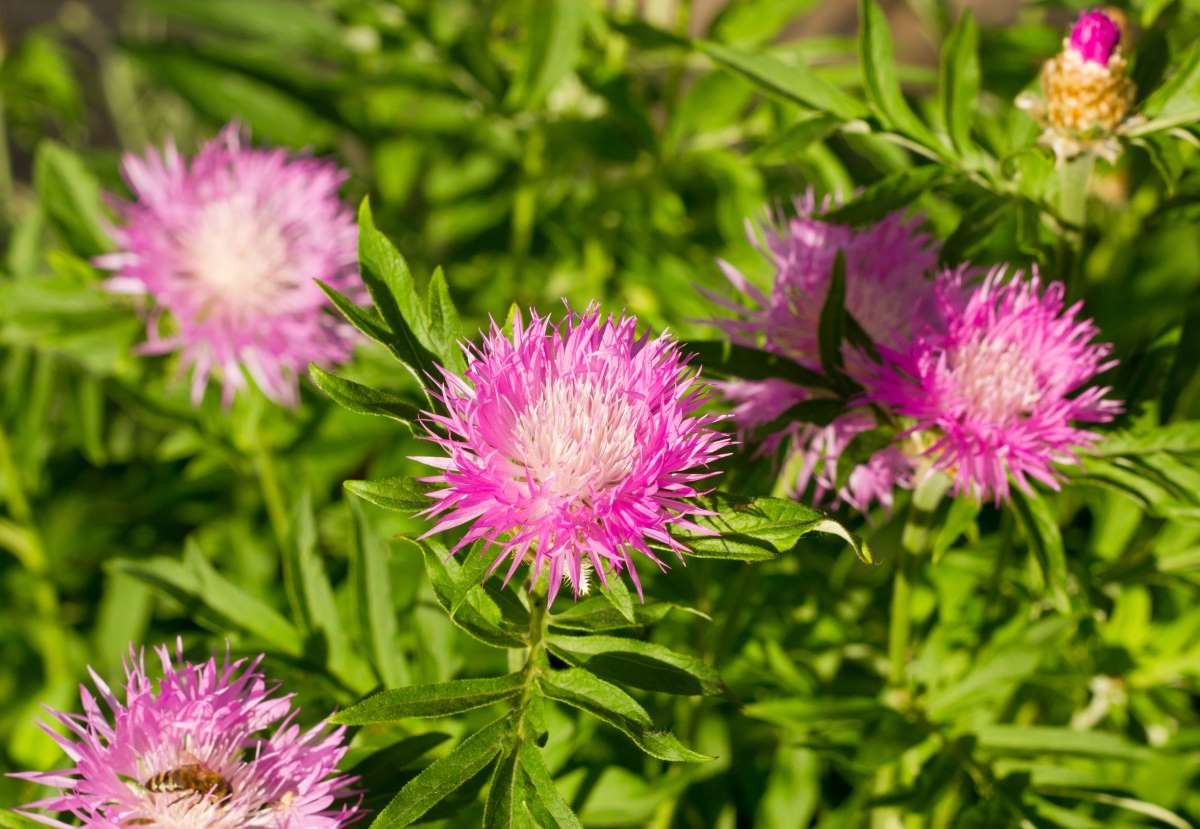Description
Centaurea – Hardheads – Knapweed – Cornflower –
There about 450 species of annuals, biennials, perennials and subshrubs, in this genus. They occur in dry sites, including woodland, rocky mountain slopes, subalpine meadows, and sand dunes mainly in Europe and the Mediterranean with a few in Asia, Australia and North America. The simple leaves are pinnatisect or pinnatifid, and sometimes silvery hairy. They bears spherical or hemispherical flowers with tubular, usually deeply lobed florets, the outer ones often larger and more spreading than the rest, in shade of blue, red, pink, purple, and yellow. Each flower has a conspicuous involucre, the bracts overlapping, fringed, and often with toothed or spiny, silvery white or black tips. Grow in a border or rock garden, some are ideal for naturalizing in grass or in a wildflower garden. Some perennial are grown as summer bedding annuals. All are attractive to bees and butterflies, and many provide excellent cut flowers.
Grow in well drained soil in full sun. Divide in spring or fall.
Prone to white mold, rust, downy mildew, powdery mildew, thread blight, and southern blight.
C. dealbata – Persian Cornflower – This erect, very leafy, clump forming perennial from the Caucasus and Northern Iran grows 3′ feet tall and 2′ feet wide. It produces obovate, pinnatisect leaves, to 8″ long, light green above and grayish green beneath. In late spring it bears white centered lilac-pink to lilac-purple flowers, to 1 ½” across. Requires staking, but easy to grow. Good for cutting.
Zones 3-9





